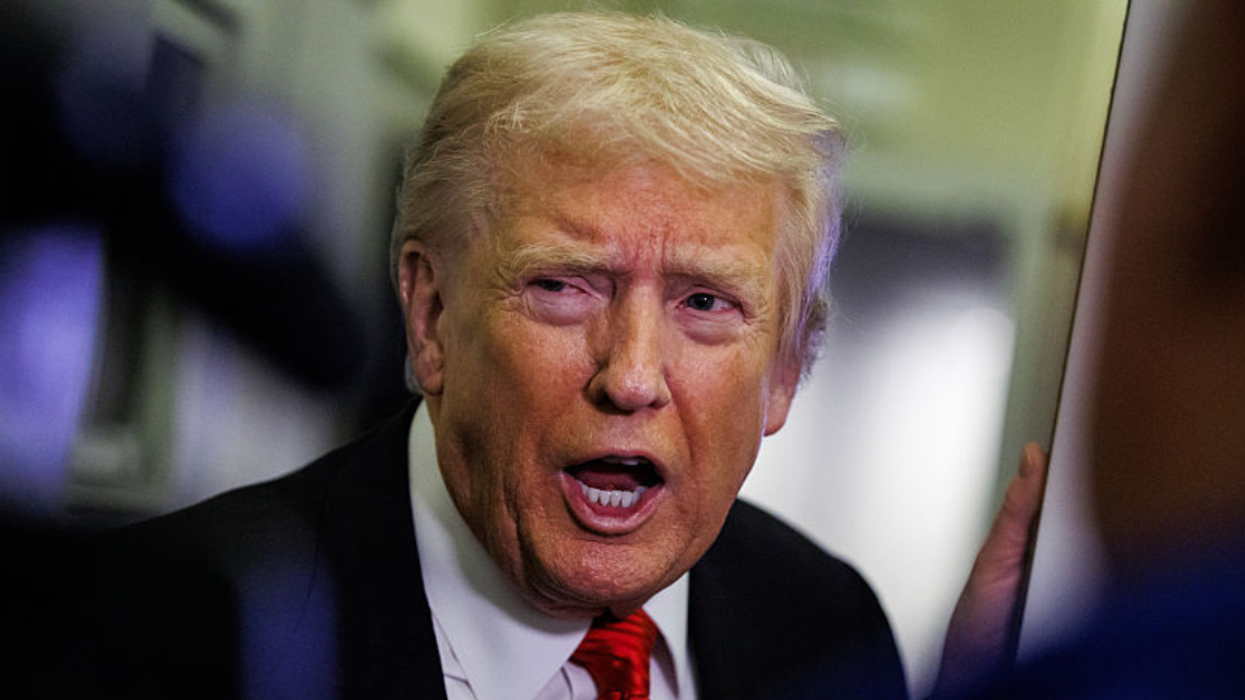A Twitter conspiracy theorist was widely mocked online after they shared a screenshot of the air quality map over the Midwest as wildfire smoke continues to bear down on the region's major cities.
For the second consecutive day, the Great Lakes region of the United States found itself under a blanket of smoke and haze originating from wildfires raging in Canada. The smoke-filled air prompted millions of Americans to remain indoors during the peak of summer, as the unhealthy conditions posed risks to their health.
Cities like Chicago, Madison, and Cleveland experienced reduced visibility and poor air quality, leading to the closure of public facilities and concerns among residents.
But a Twitter user who uses the moniker AG (@Yolo304741) did not seem to get the memo—or outright refused to acknowledge the reality of the situation—by suggesting that the government is deliberately poisoning people.
They wrote:
"We are being poisoned. This isn't from Wildfire smoke. Literally poison."
You can see their tweet below.
Twitter users were quick to point out the obvious and mock AG as a result.
While forecasters predicted that the worst of the smoke would subside by Thursday in the Midwest, concerns grew for the Northeast and Mid-Atlantic regions as the smoky air moved eastward. Officials in New York cautioned residents to prepare for potential effects on air quality.
The Air Quality Index (AQI) reached alarming levels in affected cities.
In Chicago, the AQI climbed to 217, while Detroit and Cincinnati registered readings of 203 and 185, respectively. Any reading above 100 on the index signals a warning to individuals with respiratory conditions to take precautions.
Michigan environmental officials issued a statewide air quality alert, advising vulnerable groups, including children, susceptible adults, and pet owners, to limit outdoor exposure.
The situation has disrupted daily life, leading to facility closures, limited visibility, and health concerns for residents who have been urged to stay informed and take necessary precautions to mitigate the potential health risks associated with the lingering wildfire smoke.








 @realDonaldTrump/Truth Social
@realDonaldTrump/Truth Social





 @rootednjoyy/TikTok
@rootednjoyy/TikTok @rootednjoyy/TikTok
@rootednjoyy/TikTok @rootednjoyy/TikTok
@rootednjoyy/TikTok @rootednjoyy/TikTok
@rootednjoyy/TikTok @rootednjoyy/TikTok
@rootednjoyy/TikTok @rootednjoyy/TikTok
@rootednjoyy/TikTok @rootednjoyy/TikTok
@rootednjoyy/TikTok @rootednjoyy/TikTok
@rootednjoyy/TikTok @rootednjoyy/TikTok
@rootednjoyy/TikTok @rootednjoyy/TikTok
@rootednjoyy/TikTok @rootednjoyy/TikTok
@rootednjoyy/TikTok @rootednjoyy/TikTok
@rootednjoyy/TikTok @rootednjoyy/TikTok
@rootednjoyy/TikTok @rootednjoyy/TikTok
@rootednjoyy/TikTok
 @rootednjoyy/TikTok
@rootednjoyy/TikTok @rootednjoyy/TikTok
@rootednjoyy/TikTok @rootednjoyy/TikTok
@rootednjoyy/TikTok @rootednjoyy/TikTok
@rootednjoyy/TikTok @rootednjoyy/TikTok
@rootednjoyy/TikTok @rootednjoyy/TikTok
@rootednjoyy/TikTok @rootednjoyy/TikTok
@rootednjoyy/TikTok @rootednjoyy/TikTok
@rootednjoyy/TikTok @rootednjoyy/TikTok
@rootednjoyy/TikTok @rootednjoyy/TikTok
@rootednjoyy/TikTok
 @BarryMu38294164/X
@BarryMu38294164/X
